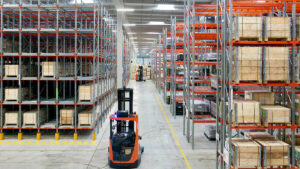A project carried out in 2013 as part of initiative of ‘Hudco Project’, for NASA, being part of the college Rizvi College of Architecture. The author was a student of 4th year B.Arch at the time, and was responsible for design development for this project. The group which has carried out the project comprised of around 12 people, aiming to provide solution for homelessness.
Homelessness: Design Strategies for Urban Change
As the world grapples with the complexities of homelessness, the essence of societal responsibility and empathy comes to the fore. This multi-faceted issue extends beyond mere statistics, reflecting a stark reality shaped by economic disparities, shattered dreams, and the harsh winds of misfortune. Rooted in economic instability, job loss, mental health challenges, and the scarcity of affordable housing, homelessness defies borders and social strata. In this article, we will delve into the issue of homelessness, the challenges posed by this issue towards the urban economy, and some design strategies to resolving this pressing issue.
Explore on Rural-Urban Inequality: Bridging the Gap Through HCES
Understanding the Complex Cycle of Homelessness
Homelessness presents a complex challenge that entraps individuals and families in a web of adversity. Economic uncertainties, sudden job losses, family fractures, and health crises contribute to a cycle that is hard to escape. The absence of stable income, suitable housing, and robust support networks exacerbate the difficulties. Recognizing the multifaceted nature of homelessness requires understanding how these factors interconnect with each other. Economic instability and job loss leave individuals financially vulnerable, leading to the cyclic nature of homelessness, where family breakdowns and health issues further compound the struggle. The absence of adequate housing and a reliable support network adds to their difficulties.
See also – slum re-development a study and proposed design interventions
Homelessness in India: A Multifaceted Challenge
The issue of homelessness in India encompasses different dimensions, propelled by the swift currents of rapid urbanisation, deepening income inequalities, and limited accessibility to essential services such as education and healthcare. In this vast and diverse nation, the phenomenon of homelessness is not uniform but takes on various forms, reflecting the intricate blend of social, economic, and geographic factors.
In urban centers, the concentration of homelessness is notably influenced by the influx of migrants seeking better opportunities. The allure of urban life often collides with the harsh reality of limited affordable housing, creating pockets of vulnerability within the concrete jungle. Cities like Mumbai, Delhi, and Kolkata stand as poignant examples where the influx of people seeking economic prospects has contributed to higher rates of homelessness. Maharashtra, with an estimated 1.2 million homeless people, Delhi with around 70,000, and West Bengal with approximately 35,000, are among the states facing pronounced challenges in addressing this issue.
Homelessness in Mumbai
The sprawling metropolis of Mumbai presents an intricate canvas of challenges in its endeavor to address the predicament of homelessness. The city’s magnetism as an economic hub draws waves of migrants seeking opportunities, often leading to their settlement in informal urban enclaves due to the dearth of affordable housing options. This situation is further exacerbated by the absence of formal identification, resulting in their exclusion from crucial services and resources. The monsoon season, a defining climatic feature of Mumbai, brings to the forefront the vulnerability of the homeless population, exposing them to exacerbated health risks due to inadequate shelter. Amid these intricacies, education, a beacon of empowerment, becomes yet another casualty, perpetuating a cycle of poverty.
-
Economic Migration and Informal Settlements
The economic dynamism of Mumbai fosters a continuous influx of migrants in search of economic prosperity. The city’s industries, financial markets, and entrepreneurial spirit collectively create an aura of potential success, drawing individuals from various corners of the country. This magnetic pull, however, is juxtaposed against the city’s limited affordable housing capacity. Consequently, a proliferation of informal settlements emerges as an alternative. These settlements encapsulate the aspirations and struggles of migrants, reflecting their determination to navigate the urban landscape, even as they grapple with the lack of formalized housing solutions.
-
Lack of Identification and Access
The shortage of formal identification among homeless individuals emerges as a significant impediment, magnifying their marginalization. Without proper identification documents, these individuals find themselves alienated from essential services and support systems. Access to healthcare, education, and social assistance becomes a distant dream for this segment of the population. This complex web of exclusion further intensifies their vulnerability and underscores the need for policy measures that bridge the gap between identity and access to fundamental rights.
-
Monsoon Vulnerability
The monsoon season in Mumbai presents a particularly challenging period for the homeless. The absence of secure shelters leaves them exposed to the relentless onslaught of rain and its associated health risks. The makeshift nature of their abodes renders them ill-equipped to withstand the elements, thereby magnifying the vulnerabilities they face. This heightened risk during the monsoon underscores the urgency of ensuring safe and stable shelter options that protect the health and dignity of the homeless population.
-
Education Disruption
Education, often a transformative avenue for breaking the cycle of homelessness, faces disruption in the face of adversity. The lack of stable housing destabilizes the educational journey of homeless children, creating a perpetuating cycle of deprivation. Education, which holds the potential to empower and uplift, is compromised as the realities of homelessness impede access to consistent schooling. Addressing this challenge necessitates holistic measures that safeguard the educational rights of homeless children, offering a pathway toward eventual stability and self-sufficiency.
Design Strategies for Homeless
In bustling metropolitan cities, where the challenges of homelessness intersect with the aspirations of its people, innovative design strategies offer a glimmer of possibility. As design meets social responsibility, these strategies can reshape the urban narrative, ensuring that every resident, regardless of their circumstances, has access to the basic rights of shelter, dignity, and the pursuit of a better future.
-
Repurposing Underutilized Spaces
Repurposing the underutilized spaces beneath Mumbai’s flyovers presents a revolutionary approach to addressing homelessness. These spaces, often overlooked, possess untapped potential to serve as shelters that shield individuals from the elements and provide a modicum of privacy. Meticulous attention to ventilation, lighting, and spatial arrangement can create habitable environments that promote physical and mental well-being. Moreover, these spaces can serve as community hubs, fostering mutual support and interaction among residents.
-
Innovative Modular Shelter Solutions
In the face of limited affordable housing options, modular shelter solutions offer a pragmatic response. Prefabricated structures, designed with meticulous consideration of space and functionality, can provide temporary, yet dignified, living spaces for the homeless. These modular shelters can be strategically located across the city, ensuring proximity to essential services while maintaining a sense of community. Integrating green design principles can further enhance their sustainability and harmony with the urban landscape.
-
Mobile Hygiene and Healthcare Units
Access to basic hygiene and healthcare services remains a significant challenge for Mumbai’s homeless population. Designing mobile units equipped with sanitary facilities, clean water, and basic medical services can bridge this gap. These units, strategically positioned in areas with high homeless population density, can offer essential services that contribute to physical well-being and disease prevention. A user-centered design approach, considering the unique needs and preferences of the homeless, can ensure the effectiveness of these mobile units.
-
Transitional Housing with Skill Development
Transitional housing, coupled with skill development programs, holds the promise of long-term stability. Designing these shelters to be more than just roofs overhead, but spaces of growth and empowerment, can facilitate the transition from homelessness to self-sufficiency. By incorporating vocational training, educational support, and counseling services, these shelters can equip individuals with the tools needed to regain control over their lives and reintegrate into society.
See also Affordable Housing at a Glance: Addressing the Homeless in India
Solution for Homelessness: Proposed Design
In the heart of South Mumbai, where the bustling streets of Nagpada, Madanpura, and Kamathipura converge, this pressing issue of the rising density of homeless individuals has emerged. This challenge is a complex interplay of factors, including migration, unemployment, and the availability of low-income work. As these issues persist, they have cast a shadow over major commercial hubs in the region.
Amid this conundrum of urbanization and homelessness, a unique proposal emerges – one that seeks to address the pressing need for shelter and community upliftment. At its core, this proposal envisions a novel approach to housing, one that borrows from the very essence of nature itself.
The concept revolves around the creation of living capsules, each representing a unit of shelter. Much like the cells in a beehive, these capsules are designed to be flexible and adaptable, capable of transforming and molding as the needs of the community change. With 100 individual pods forming a cohesive structure, this design fosters a sense of unity while maintaining individuality.
Crucially, the per-person space within these capsules is ingeniously calculated in a reverse manner. Rather than rigidly partitioning space, multiple units combine to open into a multipurpose area, ensuring that each resident enjoys more than 50 square feet of space – a significant improvement over the cramped conditions often faced by the homeless.
Furthermore, the units are replaceable, offering a practical solution during emergencies. In times of crisis, these capsules can be easily pulled out and installed to provide immediate shelter. Additionally, this modularity allows for ongoing maintenance, ensuring the longevity of the structure.
This innovative approach to housing the homeless in Mumbai not only provides shelter but also symbolizes a sense of community and upliftment. It’s a testament to the power of design and adaptability in addressing complex urban challenges. As South Mumbai grapples with the issue of homelessness, this proposal offers a beacon of hope, demonstrating that innovative thinking can create positive change, even in the most densely populated and challenging urban environments.
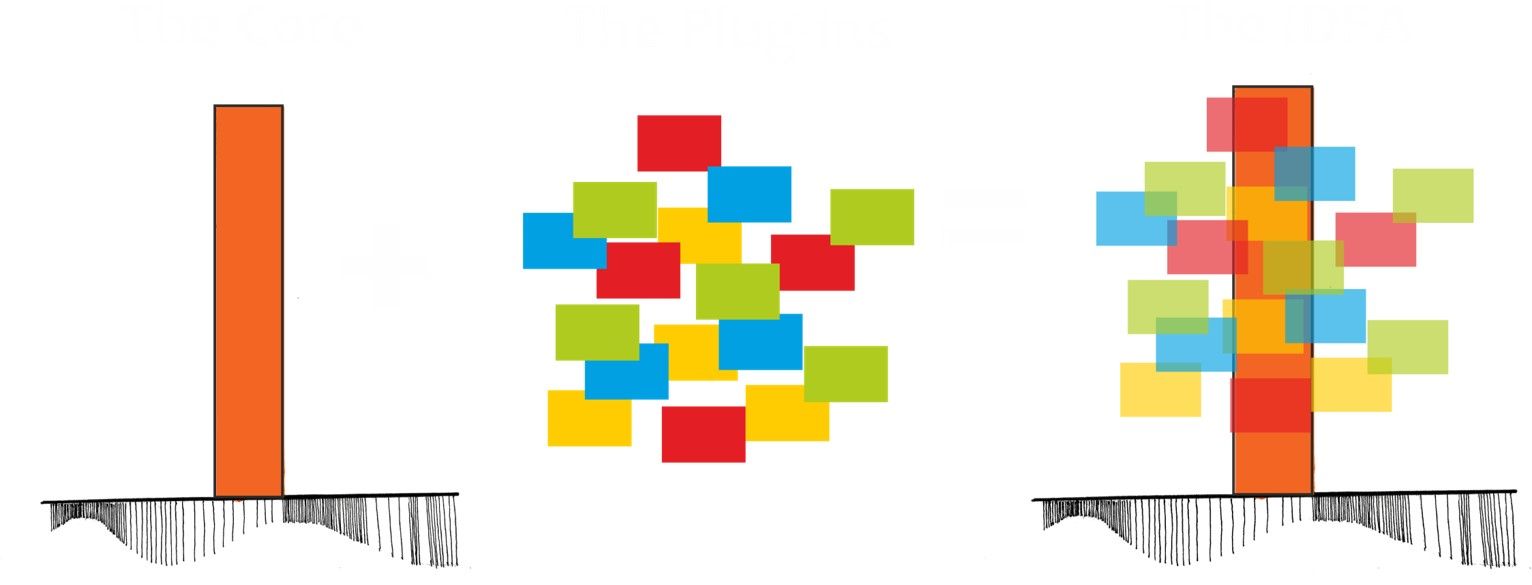
Would like to explain the project staring from the design concept first, then leading in to other aspects of the project. Conceptually, the project is based on modularity. A possible multi-urban solution to the issue at hand. Urban voids in a city are the usual places in the city where we tend to find the populations of homeless people. These spaces need to be tackled for positive usages. Shelter homes are one of the intervention possible for such voids. This intervention can be utilized with other possible design helping such ‘negative spaces’ to become positive spaces.
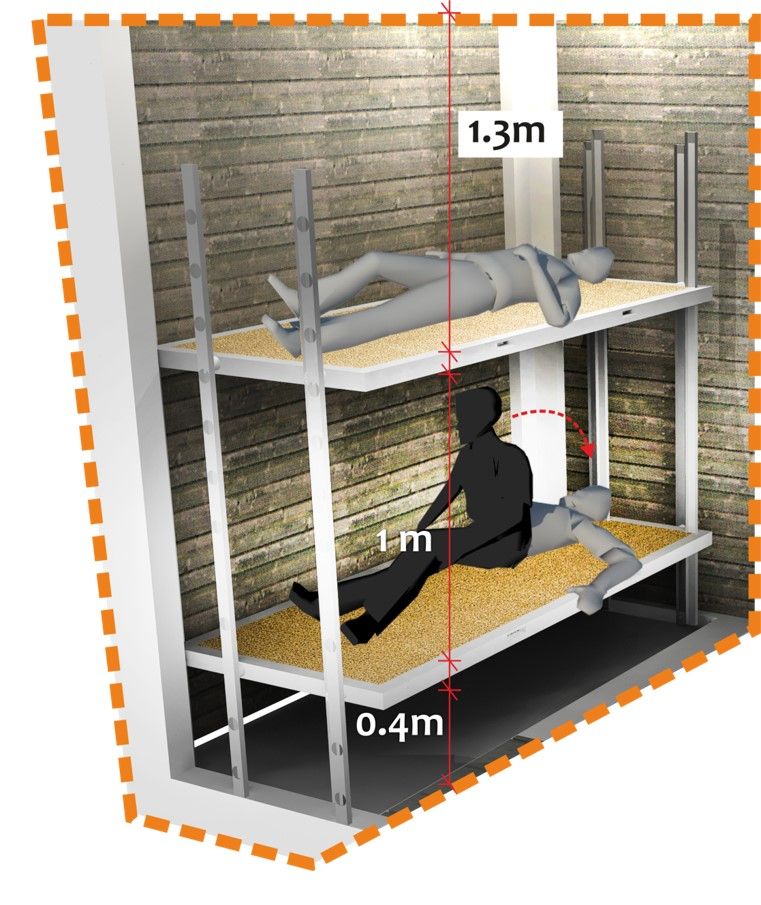
A single unit module is of the dimension of 2 meters by 3 meters. That is 6 sq.mtrs or 64 Sq.Ft. The module itself is a multi use module. It has multiple possibilities for interior arrangements. These modules would come together or combine together to form social spaces of interaction. This supported with a core, would be entire base of the design. The project was carried out for a specific site as a pilot. The configuration adopted for the project shall also be explained later below.
The completed design for the chosen site in Mumbai is representend in the mage below.
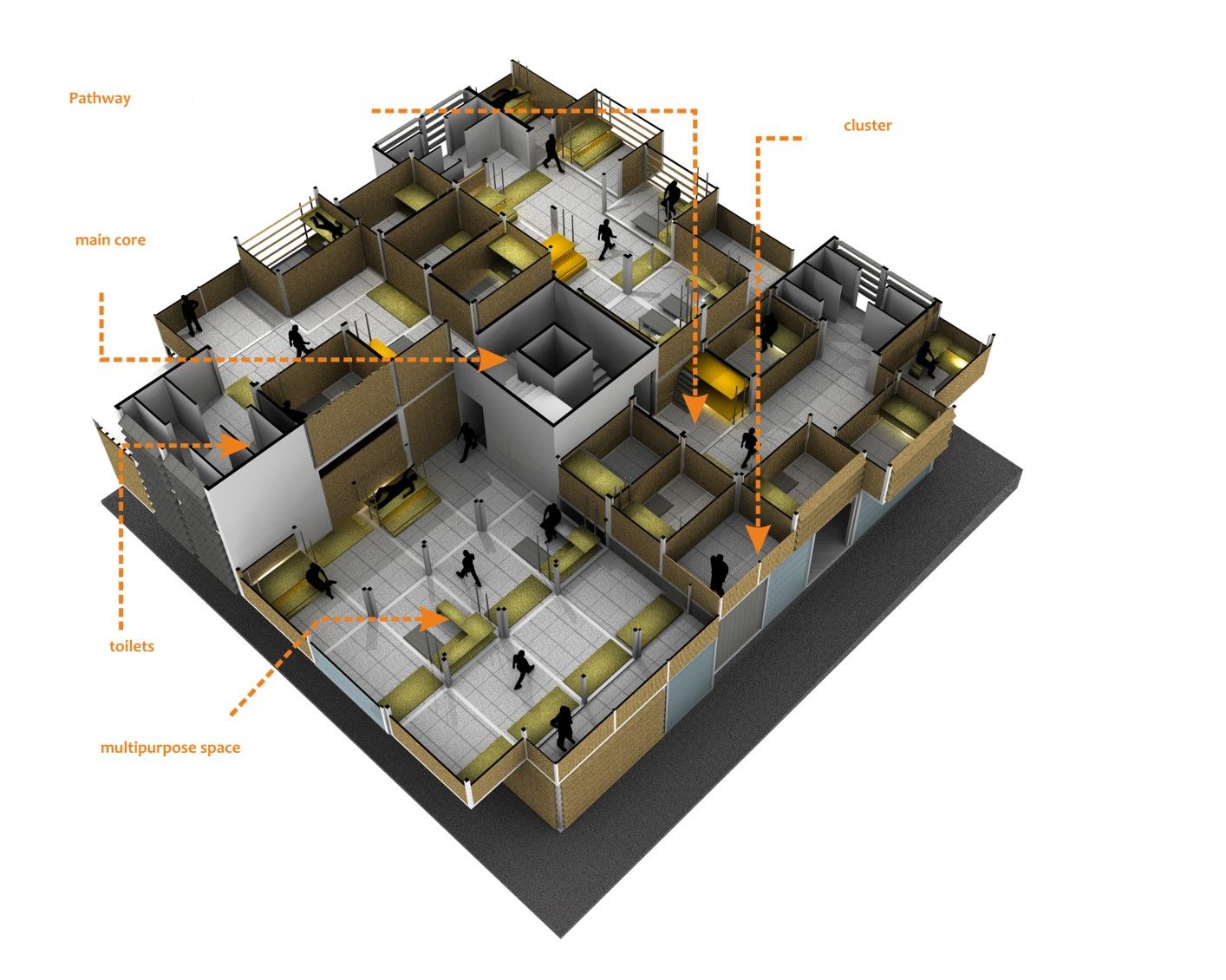
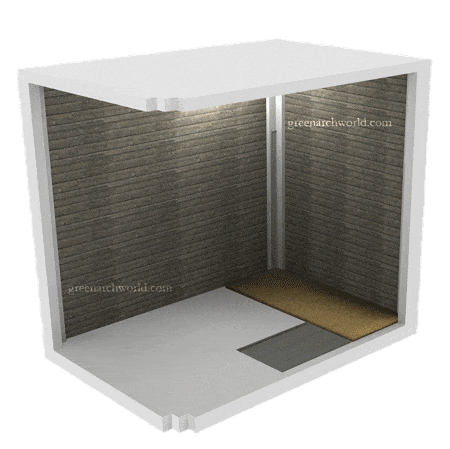

Explore on Single Floor House Designs
Hope you have found value reading the article. We would like to hear your comments or feedback at ahmad@greenarchworld.com.




